Complex 12 needle combined ECT/MWA of 8 metastatic liver lesions
CAS-One IR allowed for a standardised and efficient treatment of a complex combined ECT/MWA case. The patient was diagnosed with advanced colorectal liver metastasis and had previously undergone freehand ablation treatment with incomplete ablation results. Some lesions were also in close proximity to neighbouring structures therefore, accurate needle placement with minimal damage to surrounding structures was essential. Combining key features such as 3D trajectory planning, navigated needle placement and CT/MRI fusion, the IR was able to successfully treat the patient over two sessions, with a four-month follow-up showing no major side effects or reoccurrence.
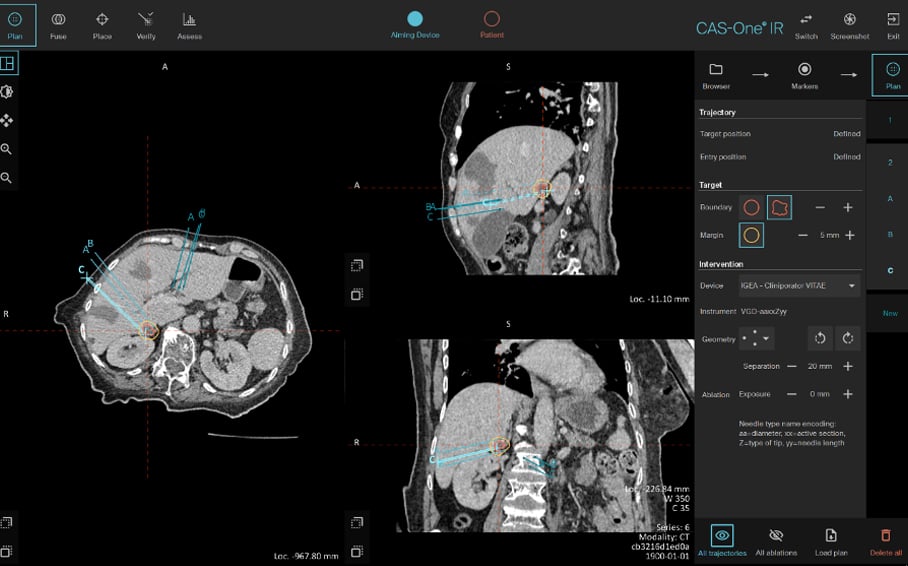
Planning ECT needle placement
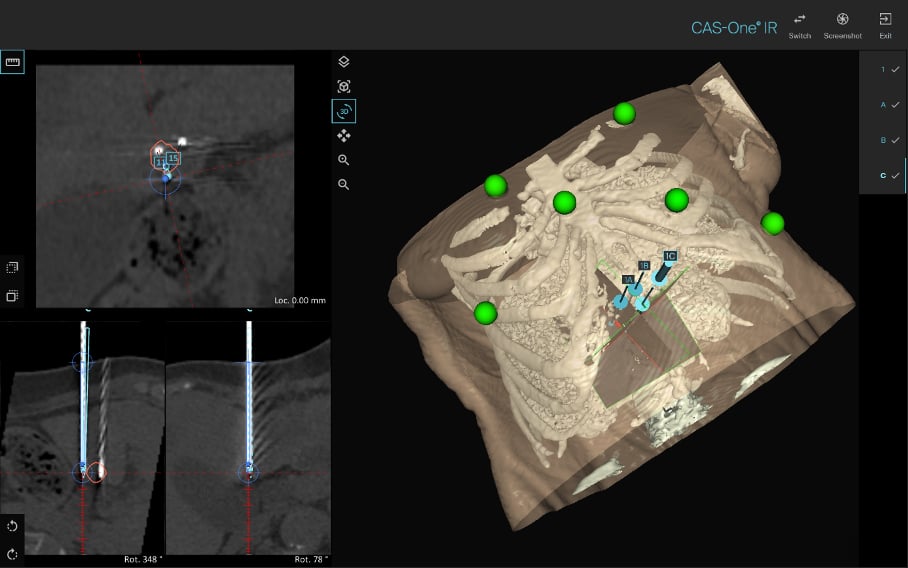
Verifying ECT needle position
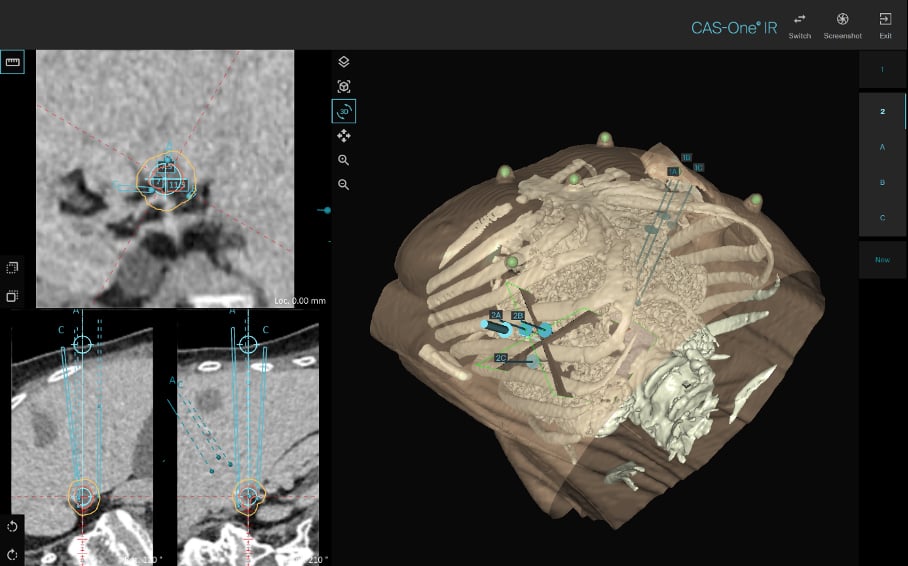
ECT parallel needle arrangement
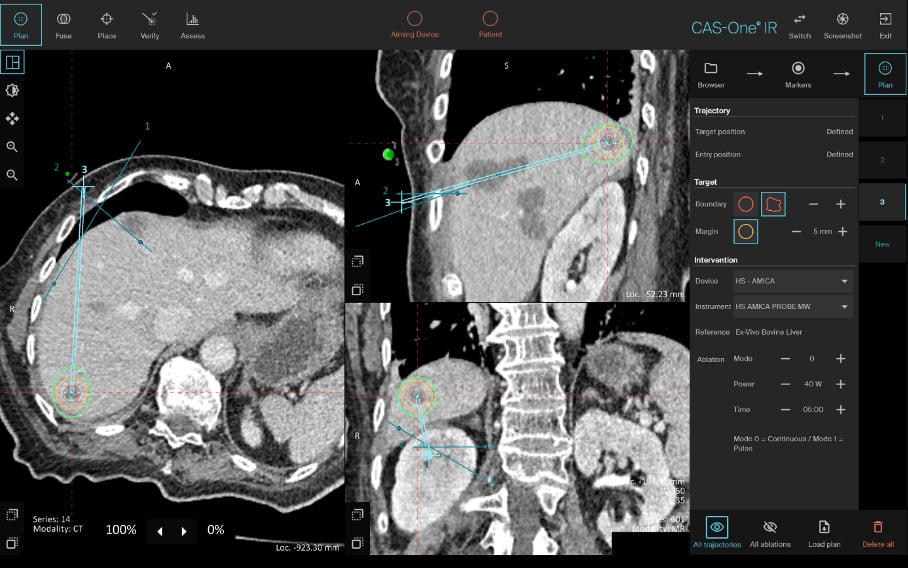
MWA trajectory planning
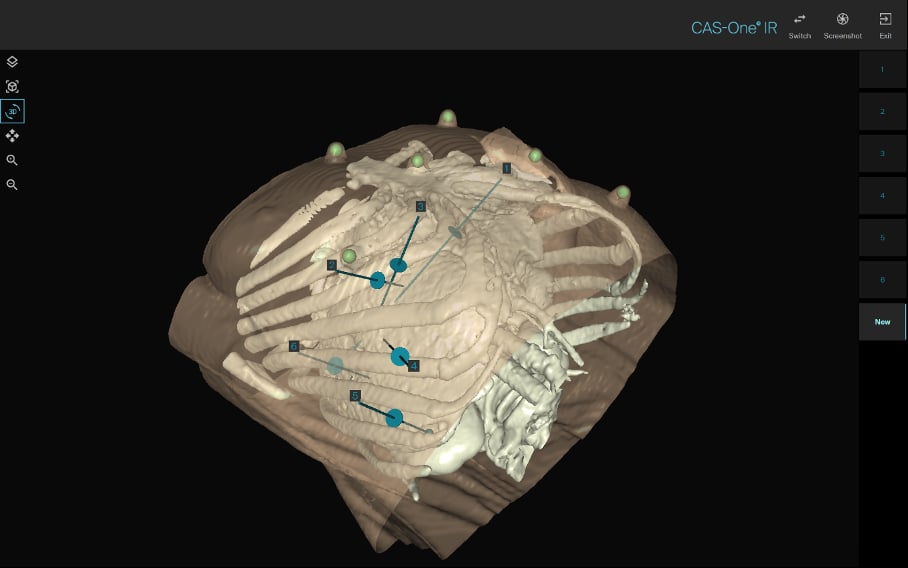
3D visualisation of all six MWA trajectories
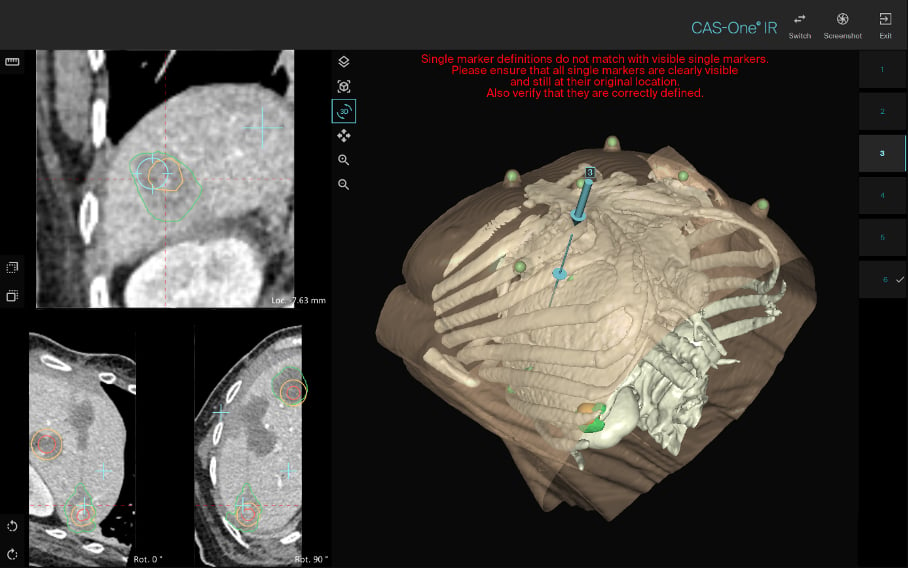
Post-ablation visual assessment of MWA ablation zones
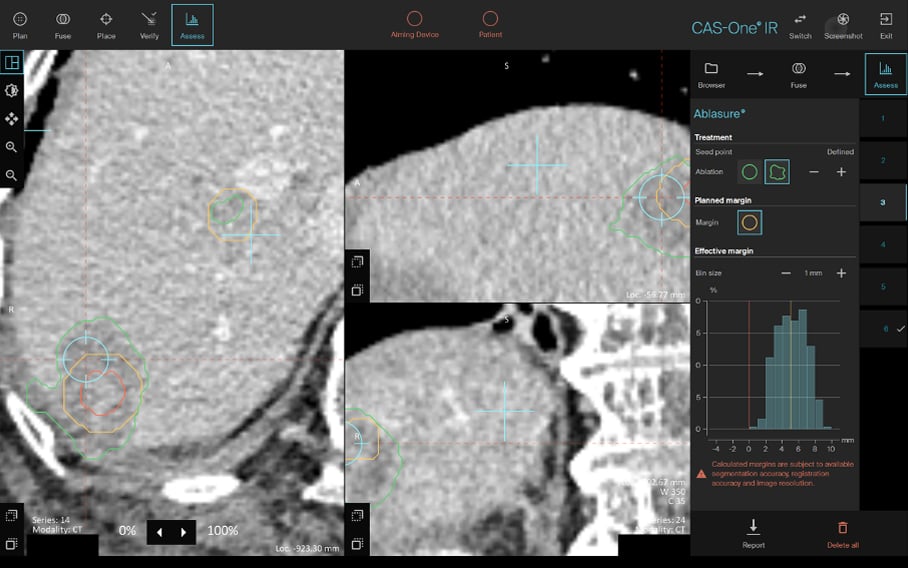
Post-ablation visual and AblaSure assessment of ablation zone
Name: Dr. Michael Kerezsy
Institution: Interventional Radiology Klinikum Passau, Germany
Patient age and sex: 75 years, female
Initial condition:
- The patient was initially diagnosed with a 5cm rectal cancer lesion and hepatic metastasis (ten lesions visible) in December 2021. Radio-chemotherapy followed by deep anterior rectal Hartmann's resection was performed in March 2022.
- Intraoperative MWA was planned for one of the ten metastatic lesions in liver segment II but failed due to technical defect of the microwave generator. Alternatively, a liver wedge resection of segment II was performed.
- Follow-up scan confirmed one new liver lesion, therefore systemic therapy with B-Folfox in combination with MWA of the metastatic liver lesions (in accordance with CLOCC study) was prescribed in April 2022.
- In May 2022, freehand microwave ablation of eight remaining liver lesions was performed. Four of the lesions were later re-ablated due to incomplete coverage. The remaining three metastases remained untreated due to CT room time constraints and complex locations of the lesions.
- The one-month post-ablation follow-up MRI confirmed complete ablation zone coverage of only three of the ablated lesions and the incomplete ablation of the others.
- Due to the complexity of the case and the need for reliable ablation zone confirmation, it was decided to re-ablate the remaining lesions with CAS-One IR navigated ablation using combined ECT/ MWA.
Treatment:
The treatment was performed in two sessions:
Session 1: CAS-One IR navigated ECT of two lesions
- Due to the close proximity to neighboring structures, two of the lesions were treated with ECT to reduce irreversible heat damage to neighboring structures. The first lesion was situated next to the choledochal duct, in Segment IV and the second being in close vicinity to the adrenal gland, in segment VI.
- ECT was performed first, to prevent significant liver deformation post-treatment, which is more common after MWA ablation.
- Six needles in total were successfully placed.
Session 2: CAS-One IR navigated MWA of six lesions
- Stereotactic navigated MWA of six lesions (three previously incompletely ablated and three unablated lesions) was performed. Additionally, CT/MRI fusion on the CAS-One IR was performed to ensure all residual tumour mass not clearly visible on CT, was targeted.
- Six needles in total were successfully placed.
Conclusion:
- This was the first case at this hospital and physician with CAS-One IR.
- Under navigation, a median lateral error for needle positionings was less than 3mm for all 12 probe placements.
- Performing parallel ECT probe placements was facilitated using the CAS-One IR planning and navigation feature, which enabled a more efficient treatment workflow for this patient after unsuccessful freehand attempts.
- The four-month post-procedure follow-up confirmed no reoccurrence and no major side effects.
- The clinical team is satisfied with the outcome of this complex case.
Learn more about the stereotactic navigation system CAS-One IR.


